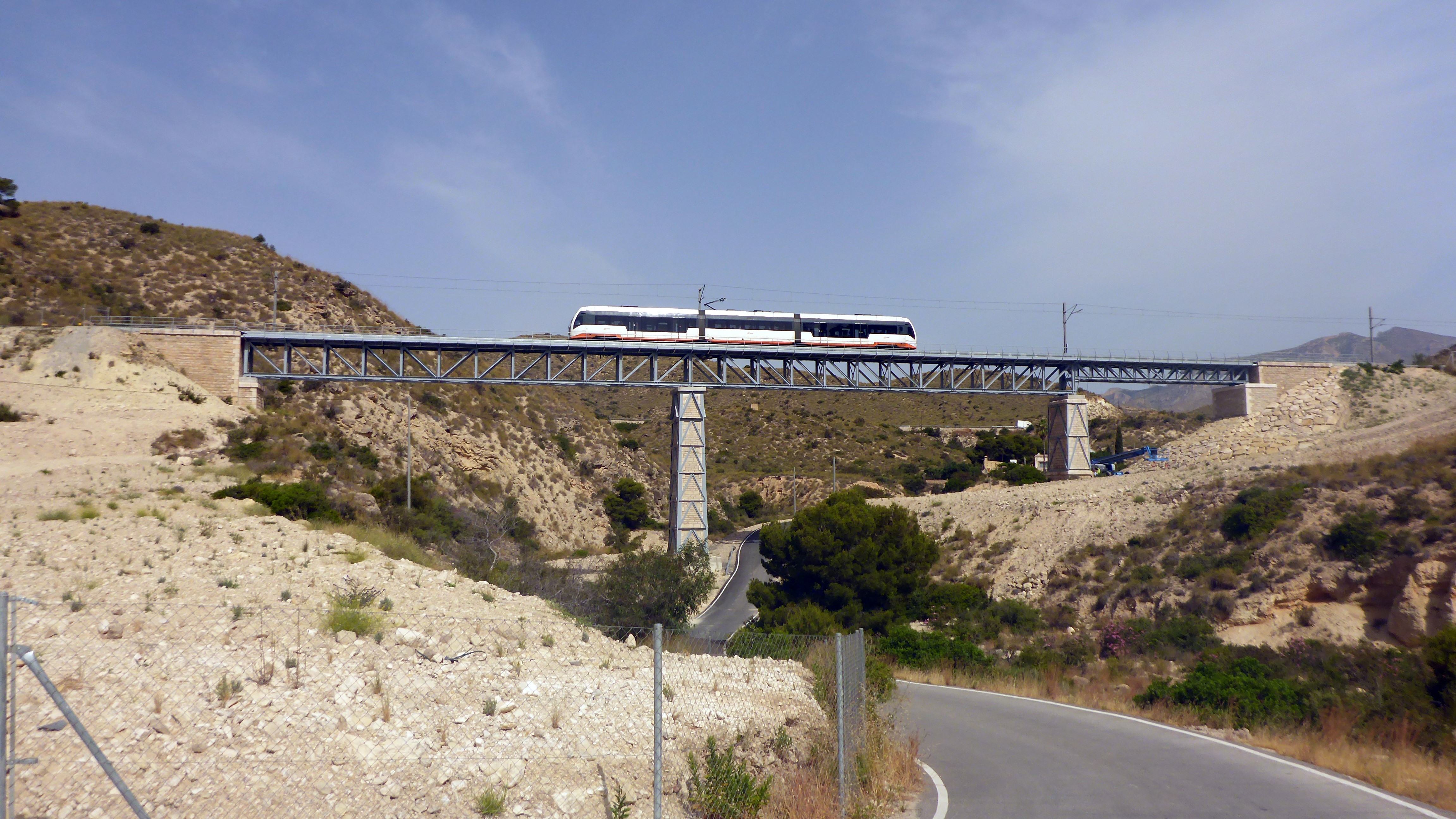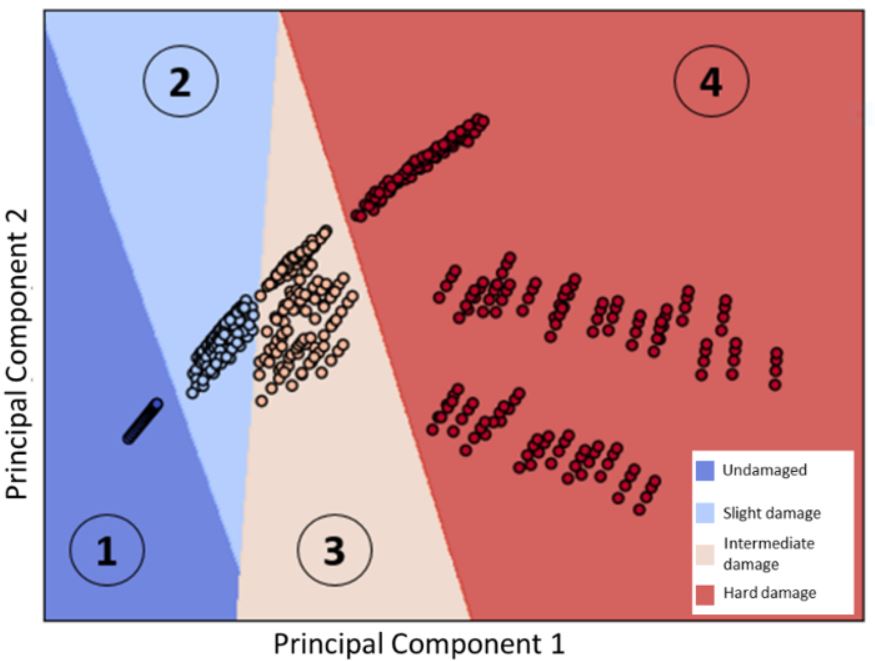Steel bridge over El Barranc d'Aigües (case study)
Object description
(No object description available.)
Object analysis
The section chosen to be monitored was the isostatic span of 21.12 meters length. This span was chosen because of a fatigue study performed to the previous old bridge, which was then replaced for the current bridge in 2018 with same overall structural scheme. This case study presents a simple and fully automatable vibration-based Structural Health Monitoring (SHM) alert system. The proposed method consists in applying an Automated Frequency Domain Decomposition (AFDD) algorithm to obtain the eigenfrequencies and mode shapes in real time from acceleration measurements, allowing to provide a diagnosis based on a Support Vector Machine algorithm trained with a database of the modal properties in undamaged and damaged scenarios accounting for temperature variability. The result is an alert system for controlling the correct performance of the structure in real time with a simple but efficient approach. Once the alert is triggered, the undamaged mode shapes (which could be previously stored in a database of modal parameters classified by temperature) and the current (damaged) mode shapes, can provide guidance for further application of Finite Element Model Updating (FEMU) techniques.
Object state
The previous existing bridge (built in 1914) presented fatigue. Nevertheless, the new bridge (built in 2018) does not present any deterioration processes nor damages to be reported at the moment of the short-term monitoring test. The aim of the case study is to address the implementation of a damage detection tool based on a machine learning algorithm known as Support Vector Machine, using the modal response of a truss bridge to calibrate a finite element model to simulate damage scenarios under changing temperature conditions to feed the machine learning algorithm.
Images
Documents
This case study was contributed by Sara Cuerva of Ferrovial Agroman S.A.. Last edited by technical staff.


